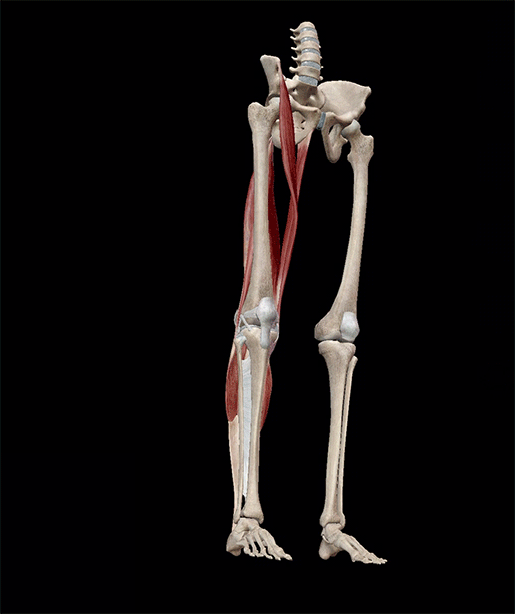Posted on 3/10/20 by Laura Snider
Many patients undergoing physical therapy during their recovery from an injury or illness are given exercises to do at home. But physical therapy exercises are a lot like math homework—ultimately beneficial, often repetitive, and potentially left undone. Fortunately, a recent study from the University of Warwick shows that virtual reality technology has the potential to increase patients’ engagement with the home exercises they’ve been assigned.
One big issue in getting patients to complete their exercises outside the PT’s office is that they may not be 100% sure if they’re doing the exercises correctly—2D illustrations, diagrams, and/or written instructions can be more difficult to follow than an actual person.

Knee flexion is one of the muscle actions involved in walking and running. In the study discussed below, participants followed the walking motions of a virtual avatar. Video from Human Anatomy Atlas.
This being the case, the VR program designed by the researchers in this study featured a virtual avatar to guide patients through their movements. The study used stepping motions to investigate how well participants could match their own movements to what the avatar was doing in the virtual environment. To measure how well participants were following along, the researchers made small changes to the virtual avatar’s steps and measured the extent to which the participants mirrored these motions.
Interestingly, the participants were better able to synchronize their movements with those of the avatar when they had both auditory and visual cues (in comparison to just having visual cues). That is to say, participants followed along more accurately when they were able to both see what the avatar was doing and hear footstep sounds corresponding with the avatar’s steps.
In a broader context, this study adds to a growing body of evidence that shows the efficacy of VR as a physical therapy tool. Research from labs like Northeastern University’s ReGame-VR and companies like Neuro Rehab VR has shown that VR experiences can be beneficial to patients during physical therapy sessions. For example, Neuro Rehab VR has developed a whole library of virtual reality programs, each one dedicated to a particular neuromuscular rehabilitation exercise.
The muscular, skeletal, and nervous systems all help the body move. Video from Anatomy & Physiology.
As VR setups become more affordable and accessible, it will be exciting to see the new ways in which VR technology can be used to help patients!
Want to learn more about VR (and how it differs from AR and MR)? Check out this VB Blog post.
Here’s some more recommended reading from the VB Blog and Learn Site about muscle movements and musculoskeletal pathologies:
Be sure to subscribe to the Visible Body Blog for more anatomy awesomeness!
Are you an instructor? We have award-winning 3D products and resources for your anatomy and physiology course! Learn more here.
Additional Sources:
When you select "Subscribe" you will start receiving our email newsletter. Use the links at the bottom of any email to manage the type of emails you receive or to unsubscribe. See our privacy policy for additional details.
©2025 Visible Body. All Rights Reserved.